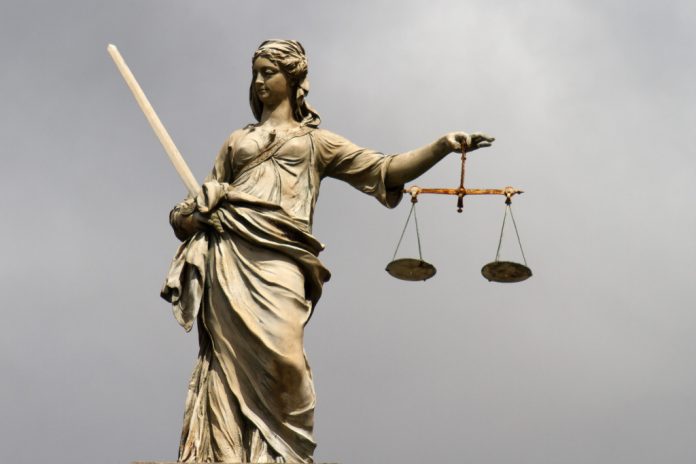This article has been written by Dhruv Gupta.
Table of Contents
Introduction
Brief facts of the present case are as follows. ‘Sharpedge Limited’ had acquired property from the Delhi Development Authority (DDA) on lease wherein the lease agreement stipulated that where the property would be sold, transferred, assigned or its possession parted with by the lessor, an unearned increase along with interest would have to be paid to DDA. On 9th February, 1984, Gillette acquired the entire shareholding of Sharpedge making it a subsidiary of its own and moreover, Sharpedge was declared a Sick Company and the Board of Industrial and Financial Reconstruction ordered all the assets to be transferred to Gillette. DDA on account of this demanded unearned increase with interest which was contested.
On 1st October, 2010, Aquarium Acquisition Corp (AAC) a subsidiary wholly owned by Proctor & Gamble (PG) merged with The Gillette Company (TGC) which is the parent company of Gillette. Furthermore, TGC transferred 41.02% of its shareholding in Gillette to PG Netherlands. This was claimed by DDA to be the transfer of the property and demanded an unearned increase with interest in this. Gillette challenged the demand of unearned increase on accounts of this not qualifying as the transfer of property along with the arbitrary charge of interest. The focus of this analysis is on the 2nd issue on the fact whether a transfer of shares of Gillette to PG qualifies as a transfer of property.
Background
One of the primary and most important characteristics of a company is that it is a separate legally recognised entity from its members and the persons who control it. This position has been so for almost the past one and a half century and has been accepted by Indian practice as evidenced in multiple decisions of the Supreme Court. Moreover, India was in fact one of the first countries to accept a company as a separate legal entity in the case of Re. Kondoli Tea Co. Ltd.
The locus classicus for this position is Salomon v. Salomon & Co. Ltd. and this position is accepted by almost all the countries in the world. However, not much after such a legal position solidified, its misuse began. To tackle this misuse, courts, though rarely and cautiously, began piercing the corporate veil to hold the actual people behind the company responsible. The present case presents as its issue, inter alia, one such appeal to the court to pierce the corporate veil of a company and merge the members with the company and this is what this paper seeks to analyse.
Analysis
The court highlighted two primary issues in the case. The first being on whether the unearned increase was to be paid on the merger of Sharp Edge with Gillette and the second being whether the unearned increase was payable on the transfer of 41.02% of shares of Gillette to PG Netherlands. Payment of unearned increase was dependent on whether the said property was transferred to someone else and therefore the fact in issue boiled down to whether in each of the two scenarios there had been a transfer of property. With respect to the first issue, the court held that the merger of sharpedge and Gillette and the subsequent decision of BIFR made the issue res integra and it was final that all the properties of Sharpedge stood transferred to Gillette which made DDA entitled to the unearned increase. However, with respect to the second issue, the court went in detail and narrowed down the issue to DDA claiming that transfer of the shares led to a transfer in ownership of the property.
As already established above, it is an accepted position that a company as an entity is separate from its shareholders. The court here reiterated that using the judgment in Bacha F. Guzdar v. Commissioner of Income Tax along with Halsbury’s laws of England. The court then went on to differentiate between the transfer of assets and transfer of properties. It relied on Rustom Cavasjee Cooper vs. Union of India which held that “Property of the Company is not the property of the shareholders.” Though the court did not substantiate this further, this is a settled position which can also be evidenced from Andhra Pradesh Road Transport Corporation v. ITO which held that the Government of India only owns the share capital in the company and not the property which is owned by the company by virtue of having a distinct legal identity. From this, it can be inferred that since shareholders are not the owners of the property, a transfer of shares making someone else a shareholder would not make them also the owners of the property. This would mean that the property would not stand transferred. The court said that in essence what DDA was asking them to do was pierce the corporate veil.
While piercing of corporate veil as a concept has been around for a century, there are no specific accepted sets of principles that could guide courts on when to pierce the veil. Even after many judgments in India and other common law countries, piercing of corporate veil has been done on a case to case basis. The court in the present case relied on a “look at test” propounded by the Supreme Court in Vodafone International Holdings B.V. v. Union of India and Anr to judge whether corporate veil should be pierced or not. The look at test was primarily developed by the UK court in W.T. Ramsay Ltd. v. Inland Revenue Commissioners where it was held that a transaction must be viewed as a whole and its components must not be dissected and seen individually to decide whether piercing is warranted. The court in the present case applied the “look at the test” correctly and held that the reason of the merger of TGC with AAC and the subsequent transfer of shares to PG, Netherlands was done under the pretext to avoid paying unearned increase to DDA but was done in a bona fide manner solely for economical and commercial reasons and therefore the part where the control of the property might have been transferred to PG, Netherlands was a dissection of the transaction which did not justify piercing of the corporate veil.
While it is generally difficult to predict when courts will decide to pierce the corporate veil, the “look at test” can be one of the guidelines to the court before deciding to pierce. The series of Indian judgments generally show that piercing is done when the people behind the company want to use the corporate veil as a facade to further their own selfish (sometimes immoral and illegal) acts. However, sometimes the court on a prima facie basis of the facts come to the conclusion that the act done warrants piercing of the veil but the “look at test” in such cases saves the controllers and members of the company from such a rash decision. In essence, the “look at test” is used to ascertain the intention behind the act and whether it was done to defraud the claimants.
DDA filed an appeal before a Division Bench of this court and relied on a Supreme Court case that had come out after the decision of the court in this case. DDA relied on DDA v. Nalwa Sons Investment Ltd., where the on de-merger of a company, the court had said that the property stood transferred. However, an important fact in that case was that the ‘Company Judge’ had expressly ruled that the properties stood transferred and it is on this basis that the Supreme Court ordered that unearned increase be paid. This case is of no use to the DDA in the present case where it is abundantly clear that the property did not stand transferred but only the shareholding. If the DDA can use this case anywhere, it is with respect to the merger of Sharpedge with Gillette where the BIFR had held that properties were to be transferred to Gillette. However, with respect to that issue the court has already ruled in favour of DDA.
Moreover, Gillette had also contested the arbitrary interest rate claimed by the DDA which had been paid by Gillette under protest since the DDA was denying to do other works that Gillette sought to do via the DDA. The court held that at a prior stage DDA had accepted that the amount of interest claimed was wrong and the court here ordered DDA to pay back that amount of interest.
Conclusion
The judgment of the Delhi High Court is a well-reasoned Judgment. The Court has rightly furthered the Supreme Court judgments highlighting the difference between the company holding property and a shareholder holding a property. The court has also settled the matter on how the transfer of assets and transfer of shares is not the same in the case of a company. Moreover, the court aptly used the “look at the test” and avoided piercing of corporate veil which as a principle was sought to be done only under special circumstances. It is to be remembered that piercing of corporate veil is an exception and not a rule and this judgment clearly upheld that.
Students of Lawsikho courses regularly produce writing assignments and work on practical exercises as a part of their coursework and develop themselves in real-life practical skill.
LawSikho has created a telegram group for exchanging legal knowledge, referrals and various opportunities. You can click on this link and join:












